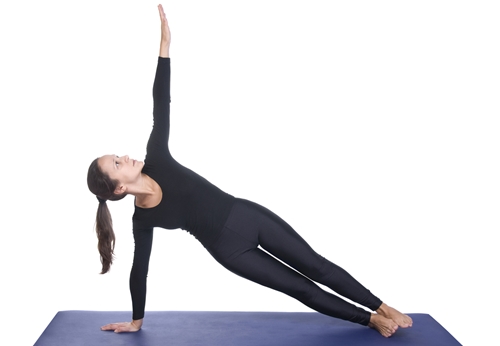
Why should you incorporate isometric strength exercises?
 There’s a good chance that if you’ve recently taken up strength workouts in addition to cardio sessions on your home fitness equipment, you’ve seen a difference in your running or cycling. You might be moving faster, have better endurance, improved posture or all of the above.
There’s a good chance that if you’ve recently taken up strength workouts in addition to cardio sessions on your home fitness equipment, you’ve seen a difference in your running or cycling. You might be moving faster, have better endurance, improved posture or all of the above.
During your lifting routines, you’re most likely doing traditional strength exercises like squats, lunges, bicep curls, crunches and chest presses. These are effective options that challenge your muscle fibers and cause them to adapt and become stronger, but did you know there’s another option when it comes to strength training? It’s called isometric exercises.
What are isometric exercises?
Unlike traditional moves that contract a muscle then let it go, isometric exercises force you to hold the contraction for a period of time.
Think of performing a plank exercise. You assume the position (like the start of a push-up), then you hold, contracting your core, abs and legs for 30, 45, 60 or 90 seconds at a time. While you’re not moving any of your body parts, you can feel the exercise working as you start to shake and your muscles begin to fatigue.
Since your ultimate goal is to constantly work toward becoming a better runner on your fitness treadmill or cyclist while training on your stationary bike, it’s important to work your muscles and body in a variety of different manners. Isometric exercises actively engage muscles but don’t require powerful movements, allowing strength to build without the risk of injury. These exercises also help work your stabilizer muscles, which protect you from falling – thereby lowering your chances of getting hurt.
Here are some excellent isometric exercises Women’s Health magazine described that will strengthen your muscles and improve your cardio:
Isometric lateral raises
- Grab a pair of light hand weights – no more than 3 pounds
- Lift your arms out to each side and up to shoulder level, keeping your elbows loose
- Hold this position for 30 seconds to start, but you can increase to 90 seconds as you get stronger
- Repeat the hold three to five times
Plank and glute squeeze
- Bring yourself to a plank position with your hands under your shoulders and your back flat as if you were starting a push-up
- Hold this position steady, for 30 seconds to start
- As you hold, contract and release your glute muscles
- Release after the time limit, rest for 30 seconds, then repeat three to five times
Isometric wall sit
- Find an open spot and stand with your back against it with your feet farther out than your hips
- Lower your back down the wall until your knees bend to 90 degrees and are over your ankles
- Press your back against the wall so you have straight posture and hold the position for 30 to 60 seconds
- For added resistance, bring your hands up in front of you to shoulder height
- Repeat the exercise for three to five reps
Side plank stabilization
- Begin in a traditional front plank position
- Lift your right arm into the air and rotate onto your side, supporting yourself on your left hand
- Hold this position for 30 seconds, then rotate to the opposite side
- Repeat the hold for three times on each side
Isometric leg raises
- Lie on the floor with your hands at at your sides and your legs extended
- Contract your abs and lift your feet off the floor so they hover about six inches from the ground
- Hold for 30 seconds, then release and repeat three to five times
